- Stocks To Space by Luca Bersella
- Posts
- Screw it
Screw it
Richard Branson's Founder Mode Playbook

Hey everyone,
I was having dinner in London this week, catching up with old friends, when one of them dropped a line that stopped me in my tracks.
She'd recently started a new role in Virgin Atlantic's finance department.
“The onboarding felt like being indoctrinated into the cult of Richard,” she said, half-laughing.
My eyebrows shot up. I didn’t properly click that Virgin Atlantic was founded by one of the most prolific entrepreneurs of our time.
She explained how Virgin Atlantic’s seemingly odd annual rituals and quirky processes worked. My curiosity was piqued, to say the least.
For example, every single employee, regardless of department, spends a day on the terminal floor helping passengers find their check-in counters.
That night, I had the opportunity to hear about the frontline experience of working in a properly founder-led organisation.
Leaving the dinner, I just had to know everything about how Branson built this thing.
Screw it
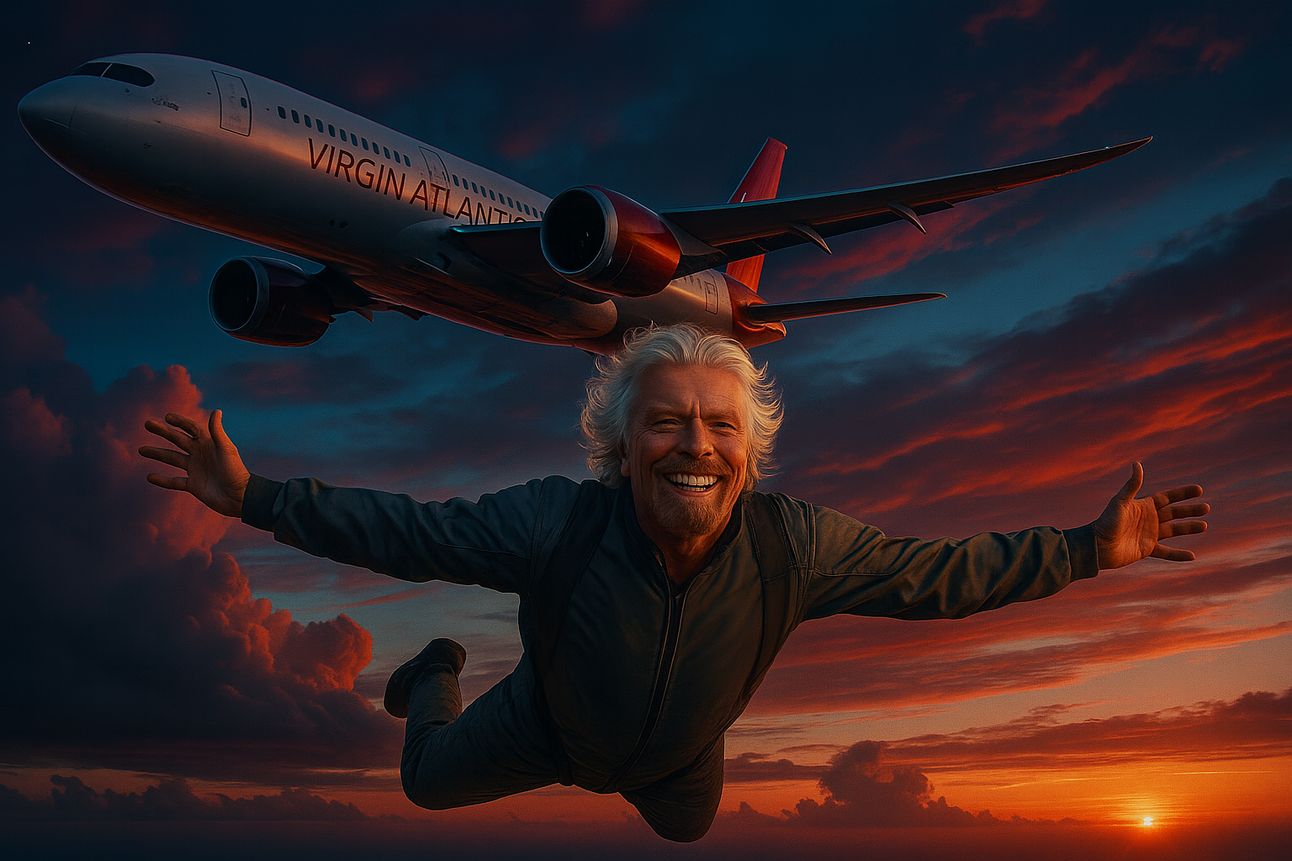
Created with GPT-4o
The accidental airline
Most great businesses start with someone getting royally pissed off by terrible service.
For Branson, that moment came in 1978.
Stranded in Puerto Rico after his flight to the British Virgin Islands got cancelled, he did what any reasonable rich person would do: he chartered a small plane to circumvent the delays.
But he did something odd at the same time.
Before departing on his charter, he grabbed a blackboard and scribbled “Virgin Airways $39 one-way to BVI” and started selling seats to fellow stranded passengers.
The impromptu flight worked. A passenger even quipped that Virgin Airways “isn't too bad—smarten up the service and you could be in business.”
Six years later, that throwaway comment became Virgin Atlantic.
But the path from blackboard to Boeing wasn't exactly smooth.
Building a challenger from nothing
By 1984, Branson was ready to take on British Airways with a single leased 747.
Think about that for a second.
One plane. Against the flag carrier of Britain.
This is where Branson's founder instincts kicked in: he structured the deal to minimize downside risk.
The Boeing 747 was leased for one year with an option to return it if the venture failed.
Every contract—aircraft, staff, insurance—was limited to 12 months.
It was the ultimate MVP approach to starting an airline.
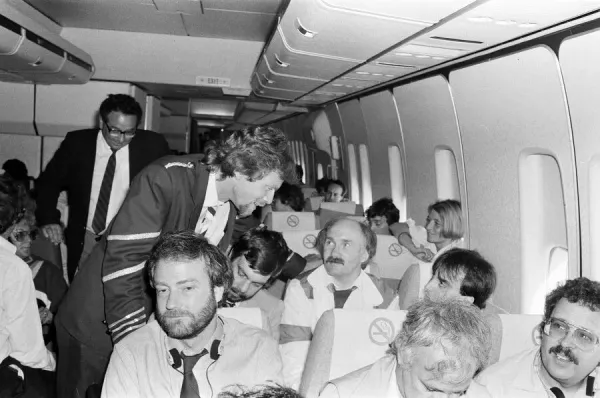
Branson greets passengers aboard Virgin Atlantic’s inaugural flight
On June 22, 1984, Virgin Atlantic's inaugural flight departed from Gatwick for Newark.
Branson filled the plane with family, friends, Virgin Records artists, 70 cases of champagne, and turned the eight-hour flight into a party in the sky.
Passengers danced in the aisles to Madonna's ‘Like a Virgin.’
Flight attendants served ice cream.
They screened the movie Airplane! for laughs.
This wasn't an accident. Branson had observed that 1980s air travel was joyless—no entertainment, bad food, poor service.
So Virgin Atlantic would be different from day one.
The successful first flight proved something crucial: the small newcomer could indeed take on the giants.
Guerrilla marketing
Virgin Atlantic spent almost nothing on traditional advertising in its early years.
Instead, Branson turned himself into a one-man PR machine.
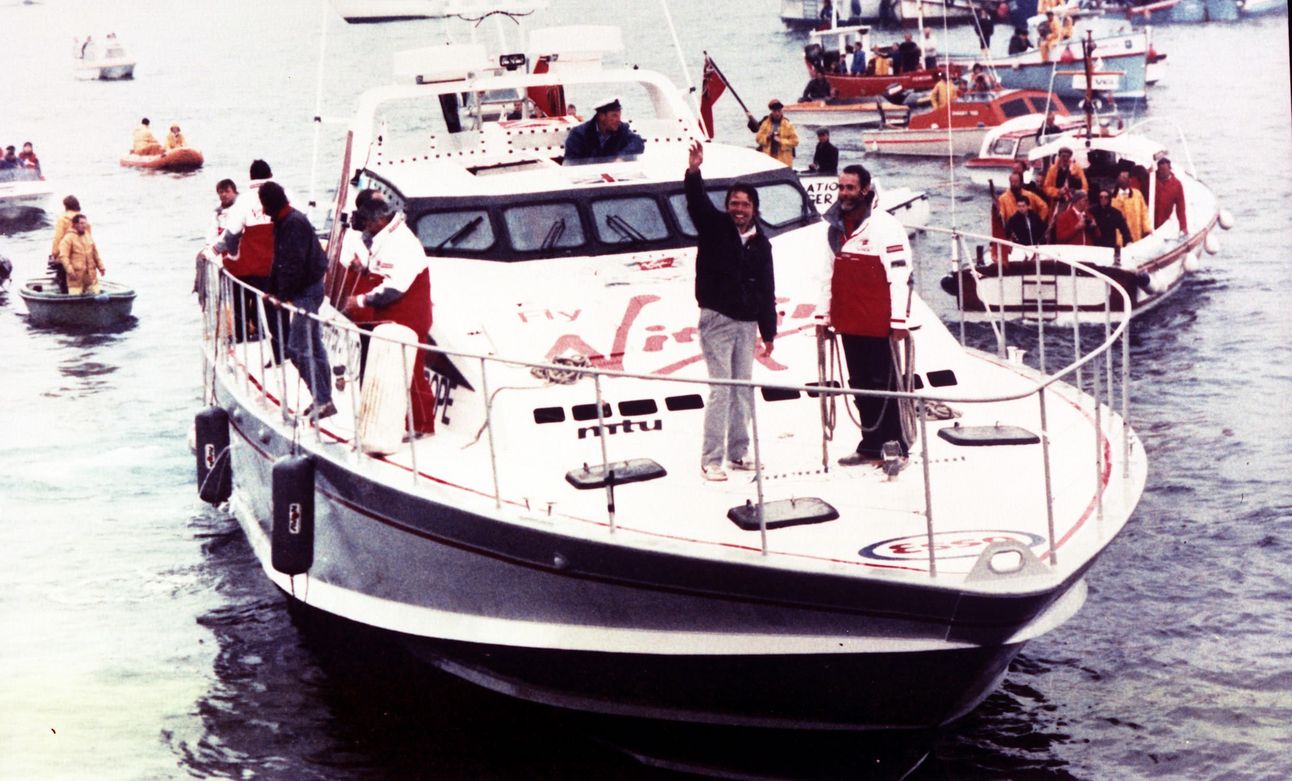
Source: CNN
He attempted to break the transatlantic speed record in a powerboat named the Virgin Atlantic Challenger.
He piloted hot-air balloons across the Atlantic with Virgin's logo blazoned across them.
When British Airways sponsored the London Eye and it got stuck during construction, Branson flew a blimp over London with “BA CAN'T GET IT UP” written across it.
His ingenious stunts proved to be calculated moves that earned him and his startup airline millions in free media coverage.
Legal battles
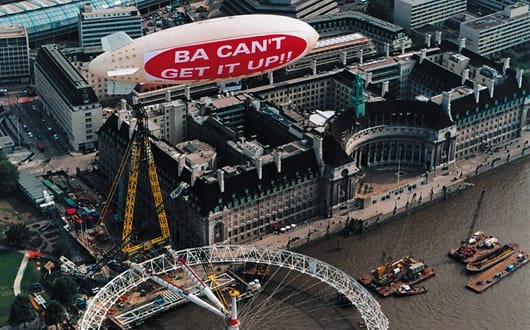
Source: Tom Hodges
But Virgin Atlantic's success also attracted retaliation.
By 1990, British Airways had allegedly formed a secret task force to ‘put Virgin out of business.’ They hacked Virgin's reservation systems, called Virgin customers pretending to be Virgin staff to falsely tell them flights were cancelled, then rerouted them to BA.
BA’s ‘dirty tricks’ campaign nearly killed Branson’s baby.
To thwart BA, Branson applied the words of wisdom from aviation veteran Sir Freddie Laker, who advised Branson over lunch to “sue the bastards.”
In 1992, Branson sued British Airways for libel. BA settled, paying Virgin Atlantic £610,000 in damages plus £3 million in legal costs.
Branson distributed the entire settlement to Virgin Atlantic employees as a ‘BA bonus’ Christmas gift.
But the damage had already been done.
To keep the airline afloat, Branson made a heart-wrenching decision: he sold Virgin Records—the foundation of his empire—for $1 billion.
“It felt like selling one's own child,” he said.
But it saved the company.
Founder Mode defined
This is where Branson's story intersects with something that's been making waves in startup circles over the past year: ‘Founder Mode’.
The term exploded in late 2024 when Airbnb's Brian Chesky revealed that following conventional “hire great people and step back” advice had been disastrous for his company.
Paul Graham distilled it perfectly: there are two ways to run a company—founder mode and manager mode.
In manager mode, you delegate aggressively and engage only through direct reports.
In founder mode, you stay deeply involved across all levels and functions, just like in the scrappy startup days.
Branson embodies this perfectly.
Even as Virgin Atlantic grew, he never stopped being hands-on where it mattered most.
He personally negotiated that crucial one-year aircraft lease.
He orchestrated every marketing stunt himself.
He instituted rituals that embedded his customer-first philosophy throughout the organisation.
The power of the cult
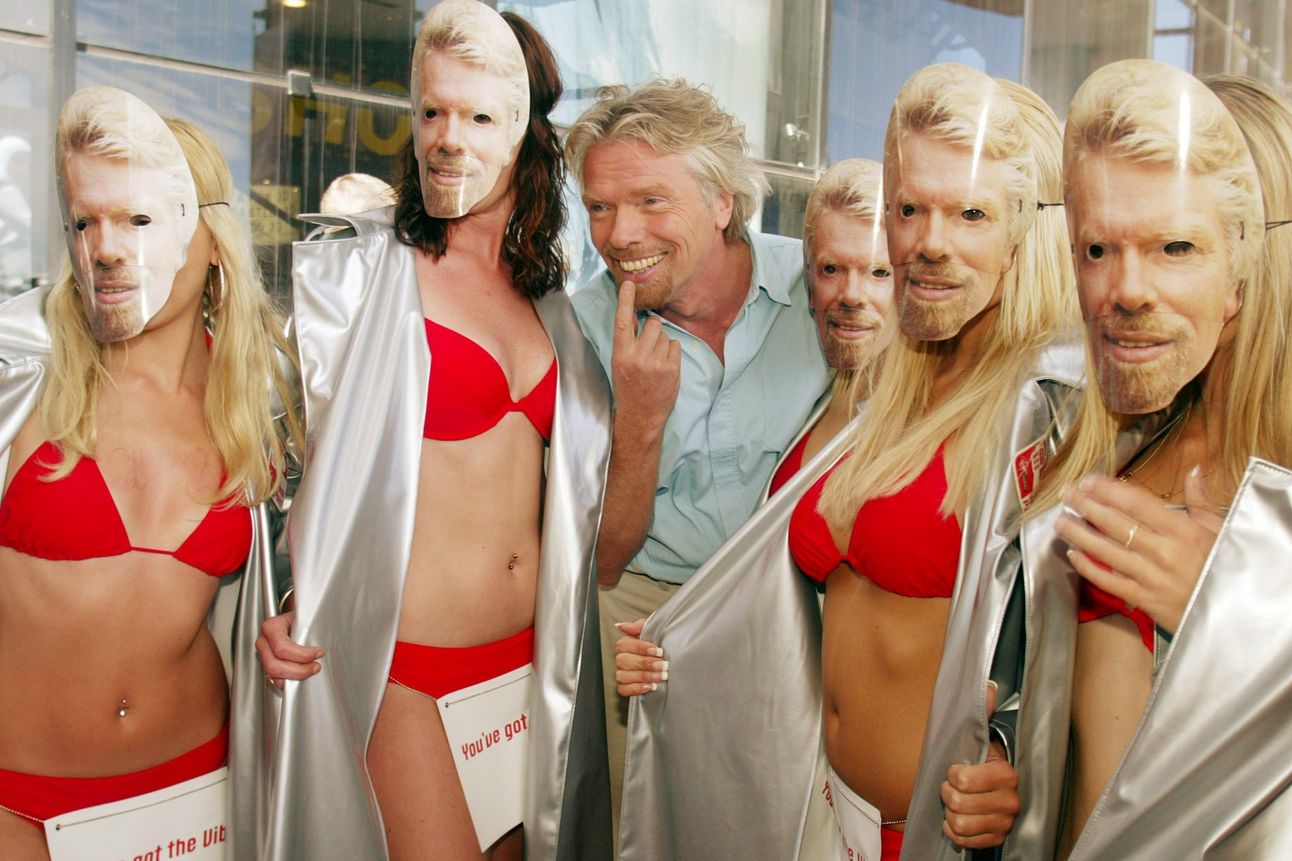
Source: The Times
It turns out Branson had created something most founders struggle to build at scale.
Perfect alignment via a cult-like organisation.
Peter Thiel once said that “a startup is the largest group of people you can convince to build a cult around an idea.’
That sounds extreme until you think about it.
In a startup, everyone needs to be rowing in the same direction.
You can't afford the luxury of departments that don't understand each other or employees who've never experienced your core mission.
Getting your finance department onto the terminal floor to help passengers isn't a PR nicety—it's strategic alignment.
Instead of writing a 100-page manual on customer service, Branson created a shared experience that teaches Virgin's values viscerally.
It's faster than training.
More memorable than presentations.
And it scales the founder's mindset without requiring the founder to be present.
Lessons for founders
Branson's journey from cancelled flight to global airline teaches us something crucial about building companies.
The best founders don't delegate the stuff that actually matters.
They get scrappy. They stay close to customers. They embed their values through experience.
They understand that executing on their own leadership philosophies trumps quippy catchphrases.
Most founders face a choice as they scale: step back and become a “professional CEO” or stay in the trenches.
Branson chose the trenches.
He stayed involved in marketing, culture, and customer experience—the things that made Virgin Atlantic unique.
He delegated operations, finance, and logistics to individuals who were more skilled in those areas than he was.
But he never delegated the mission.
Four decades later, Virgin Atlantic employees still feel like they're part of something bigger than an airline.
They're part of Branson's vision to make flying fun again.
That's the power of founder mode done right.
Get your hands dirty
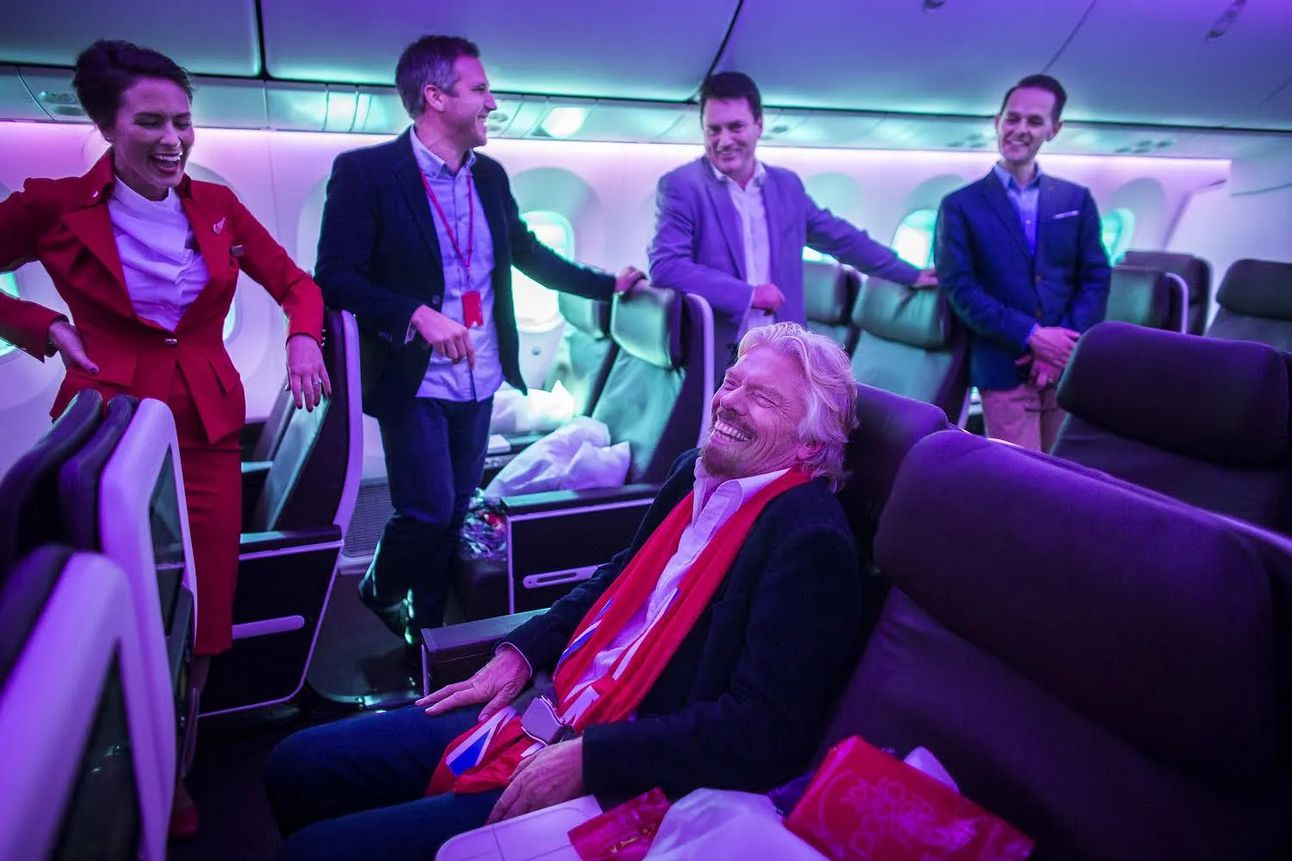
Source: Skift
As you build your company, ask yourself: what are the non-negotiables that need your fingerprints on them?
For Branson, it was customer experience, brand personality, and cultural rituals.
For you, it might be product vision, hiring, or how you talk to customers.
The key is to make sure you stay hands-on with the things that define what makes your company unique.
Because at the end of the day, great founders aren't managers sitting in board meetings every other Tuesday.
They're missionaries who never stop caring about details.
So, next time someone calls your company a cult, smile and pass the champagne.
You're in good company.
Was this newsletter forwarded to you? If you liked it, sign up here.
And, if you loved it, forward it to your friends and family.
Thanks for reading,
— Luca
What did you think of today's edition?(Let me know how I can improve) |
HOW I CAN HELP 🤞
P.S. Want to work together?
Get your free AI audit: If you’re still manually doing work that AI could handle in minutes, I'll show you exactly where you're bleeding time and money. In 25 minutes, I'll audit your current workflow and map out your personalized AI transformation roadmap. This is the same process I used to save 15+ hours per week in my own business. 🤖
See my complete tool stack: Beyond what I've shared in my AI operating system, I maintain a living document of every AI tool I test, why I use it, and which ones actually move the needle. Access my complete AI toolkit by reaching out here. 💼
That’s it from me. See you next week, Luca 👋
Reply